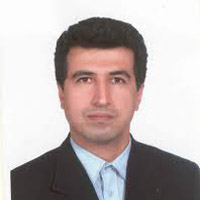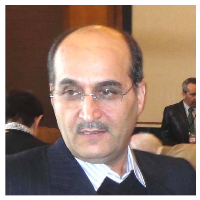Assessment of Shahu’s karst evolution by generalized additive model
Karst terrains play an important role in the lives of its inhabitants, and especially in dry and semi-arid countries, they are very important in providing water resources. According to UNESCO's research, karst aquifers are the most important and safe sources of drinking water in the world (Auerli, 2010:6). It seems that in the near future, due to the pollution of non-karstic water resources, as a result of human activities, this amount will increase. Karst morphology plays a very important role in evaluating the sensitivity of karst aquifers. Karstic water resources are the most important source of water supply in Kermanshah province. Due to the characteristics of karstic zones in this area, these resources are very sensitive to environmental changes. Therefore, identifying the karst landforms, observing and analyzing them are methods that cannot be separated from the complex examination of karst zones. Karstic aquifers in the Shahu area feed on many rivers and wetlands in Kermanshah. In addition, local communities around the water use aquifers for drinking and farming purposes. Therefore, based on these facts, it is very important to provide maps that determine the extent of Karst development in these areas.
This research is based on field techniques, tools and libraries. The main data of the research include a digital model of height of 12.5 meters from the US Geological Survey, geological maps of 1: 100000, land use map from Kermanshah County Governor's Planning and Design office. In this research, firstly, Karstic Dolines were identified as the most transformed Karstic Landform in the study area using the CLC method and were validated using field studies. The Dolines distribution map was prepared. In order to investigate the relationship between each of the factors affecting the karst evolution in Shaho area, the maps of each of the effective factors with the Dolines distribution map were overlapped in the ARC Gis software, and the weight of each class of factors influencing karst evolution using the Evidential belief function was gained. A generalized nonparametric analytic collective model is an extension of linear models to generalizations (Hastie & Tibshirani, 1990). In the generalized additive model unlike the linear regression model, data is allowed to determine the shape of the response curve.
The results of the slope factor analysis indicate that the maximum weight of Dolines produced in the Shaho area is 0-5% slope, so that 61% of the karstic dolines in this class are in the high slopes. The highest amount of Dolines is in the northern slope direction. Surveying the results of the region's mineralogy units show that the highest weight obtained from the confidence level of 0.996 is related to the Bisotun massive limestone formation, which includes most of karstic dolines. Land use results show that the most of the karstic Dolines were in the good rangeland (0.45), medium rangeland (0.48) and semi-massive forests(0.7). The relationship between the Dolines and the distance from the drainage show that the highest weight (0.63) of Dolines was observed in the distance of 100-200 meters from the drainage. The area of the Karst transformation classes is presented using the aggregated general model in Figure 1. The results indicate that 27 percent of the region is in a high level of transformation. The generalized additive model show that among the ten factors used in the model, lithology, slope, distance from fault, rainfall, altitude, distance from the waterway, land use and aspect, respectively, were significant in karst development. The coefficient of explanation for the generalized model was 0.74 for functional factors. Finally, the mapping of the Karst developement in Shaho area was evaluated using the ROC curve and its curved surface.
Fig1. The area of the Karst evolution zones in the Shahu area (km2)
The results of validation show that the accuracy of the generalized nonparametric analytic collective model with the sub-curvature level is 0.798 is very good. The results of the model's prioritization indicate that the significance of lithology, precipitation, slope and tectonic factors was more than other factors in the Karst evolution in Shaho area. The results showed that the highest degree of karst evolution is in the low slope of 0-5%, low distance from the streams and the fault and the northern direction of slopes. The extent of karst evolution in Shahu area is higher in good rangelands. As the solubility of calcareous rocks increases with the degree of purity in the karst process, hence the high thickness and high purity of Bisetoon limeston in the Shaho region provide a good lithology for Karst development in this region. Favorable climatic conditions are not currently available for the development of Karst in this region. just at high altitudes above 2500 meters can be see the effects of the Karst evolution. The variation of karst landforms in this area is very high and therefore it is necessary to determine how using of this resources and appropriate protective measures prepared.
- حق عضویت دریافتی صرف حمایت از نشریات عضو و نگهداری، تکمیل و توسعه مگیران میشود.
- پرداخت حق اشتراک و دانلود مقالات اجازه بازنشر آن در سایر رسانههای چاپی و دیجیتال را به کاربر نمیدهد.




